Sponsored by B&W TekReviewed by Olivia FrostMay 30 2023
Archaeological artifact and artwork study relies heavily on identifying chemicals. This crucial information can be obtained through non-destructive Raman analysis conducted within the environment where the artifacts are found.
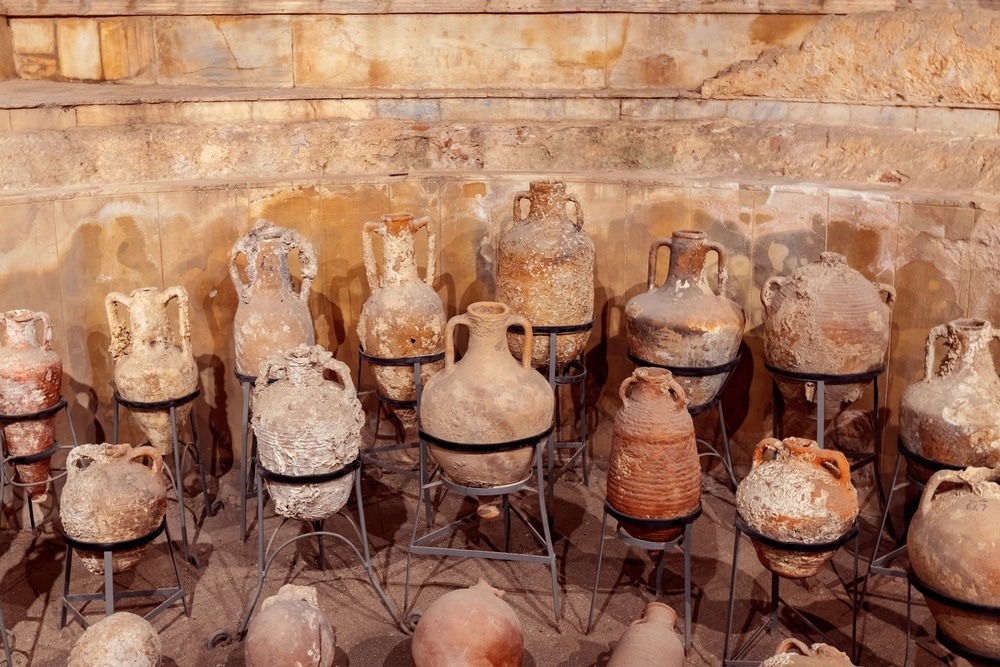
Image Credit: ShutterStock/EllSan
The data obtained helps identify pigments, dyes, and paints, shedding light on when it was produced and its authenticity.
Raman spectroscopy measures lower frequency vibrations and provides rich information for characterizing minerals and inorganic materials, such as pigments, particularly in regions below 500 cm-1. Analysis of the Raman spectrum helps determine the differences in polymorphic pigment forms.
Raman spectrometer advancement, particularly their reduced size, has augmented its applicability in archaeological investigations.
The portability of instruments, such as i-Raman® series, permits on-site analysis without removing samples and potentially disrupting critical archaeological sites.
The fiber optic probe equipped in these instruments facilitates easy access to samples in various environments, including those difficult to reach.
The portability and fiber optic probe help measure samples of different shapes and sizes without sample preparation.
The system's laser power is adjustable in 1% increments, which permits low laser power (3 mW). This is particularly useful when working with challenging samples like dark pigments.
Examples of Raman Spectroscopy Use in Archaeology
In a recent investigation, portable Raman spectroscopy helped characterize prehistoric paintings found at the Abrigo de los Chaparros (Albalate Del Arzobispo, Teruel) on the Iberian Peninsula.1
The paintings were discovered in open-air shelters, making Raman measurements challenging due to environmental factors, such as sunlight, wind, dust, and crusts that develop on the surface, obscuring the Raman signal of the pigments.
The study designed and implemented a flexible foam rubber cap (Càrol's cap) to minimize these interferences. The resulting spectrum of finger dots collected in the daylight in the cave is presented in Figure 1, wherein peaks of haematite (h) are observed along with those attributed to crusts containing whewellite (w) and gypsum (g).
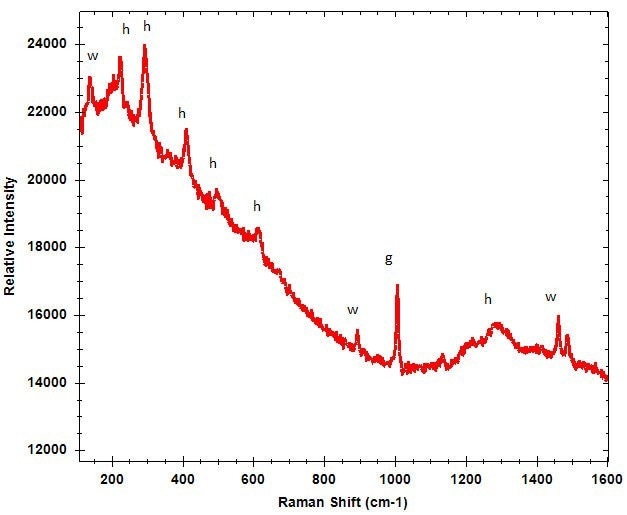
Figure 1. Raman spectrum of cave rock art measured in situ in daylight with peaks of the pigment haematite (h) and accretions of gypsum (g) and whewellite (w). Image Credit: B&W Tek
B&W Tek's portable Raman spectrometers are currently being utilized in a comprehensive investigation of the materials employed in the plasterwork present in the vaults of the Alhambra Hall of Kings, which is considered one of Spain's most significant cultural sites.2,3
This work, which has been ongoing for several years, aims to study the plasterwork materials, focusing on the technologies used for their application and the decay they have undergone over the centuries.
Figure 2 portrays a schematic of the Hall of Kings, which highlights the location of the Raman instrument coupled to a microscope head on the scaffolding, 12 meters above the ground. Images of the instrumentation and the video microscope with a motorized stage on a tripod mounting are presented.
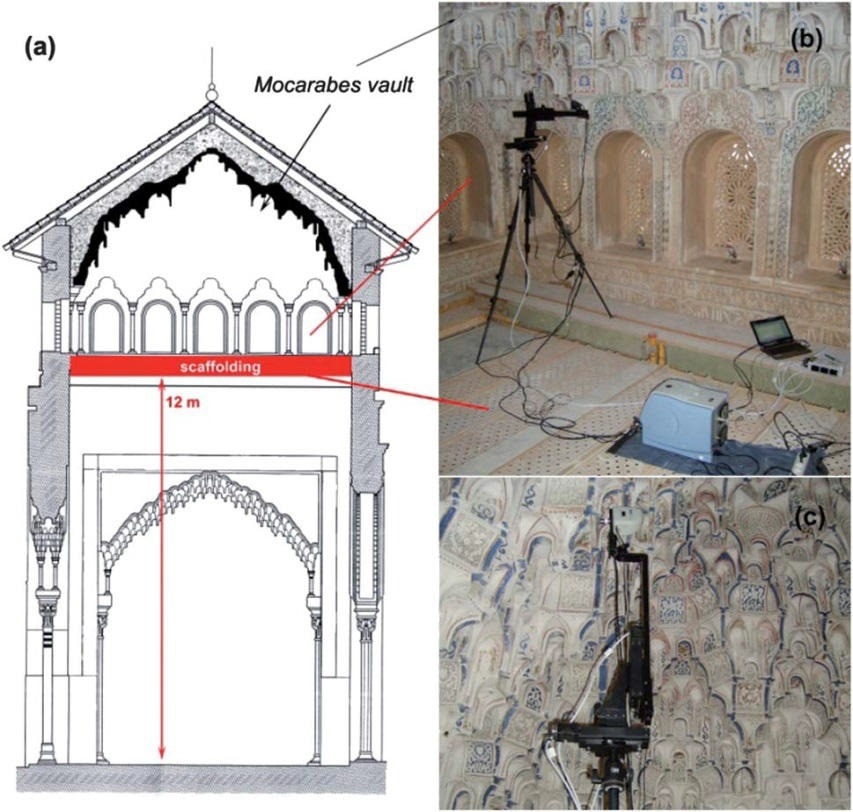
Figure 2. (a) Schematic of a vertical section of one vault in the Hall of the Kings with height of the scaffold holding instrumentation marked. (b) complete Raman instrument on top of the scaffolding and (c) details of the microscope probe on tripod. Reproduced from reference 2 with permission of The Royal Society of Chemistry. Image Credit: B&W Tek
The decorations of the stalactite vaults at the Alhambra, constructed from gypsum and embellished in various colors reflecting the Islamic style, were analyzed via Raman spectroscopy without sample removal.
This enabled the preservation of the site's cultural heritage while simultaneously enabling the analysis of a larger site area. Various pigments, typical of antiquity, were identified. The spectra details could also determine the geographic origin of lapis lazuli.
In Islamic art, blue is a prominent color produced using the mineral lazurite, which forms the lapis lazuli pigment. Figure 3 illustrates the spectra of blue decorations in the vault and natural and synthetic blue pigments, all of which display the characteristic peak of the lazurite mineral at 548 cm-1.
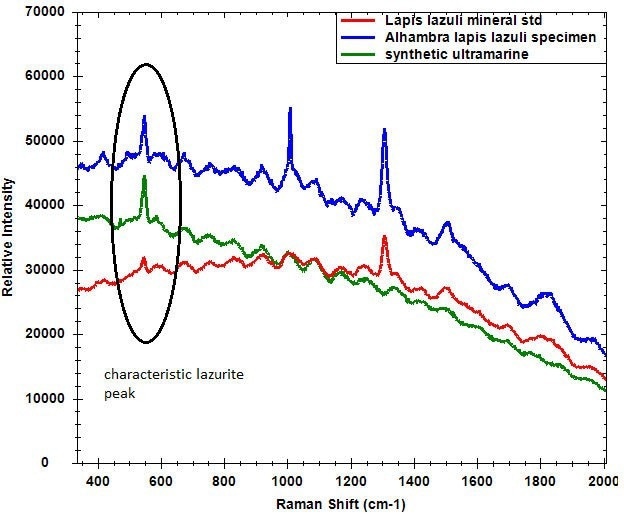
Figure 3. Raman spectra of blue pigments, all exhibiting characteristic lazurite peak at 548 cm-1. Image Credit: B&W Tek
In the decorations of the vaults, the red color is provided by the pigments cinnabar and minium, found in various parts of the vaults. They were used in some decorative motifs.
The Raman spectra of the cinnabar were measured over the gypsum substrates. The pigments and degradation can be identified from the collected data.
As shown in Figure 4, the degradation product calomel results in white coloring, which is detectable in the cinnabar Raman spectra. The spectra also show a signal at 1009 cm-1, attributed to the gypsum substrate over which the pigments are applied.
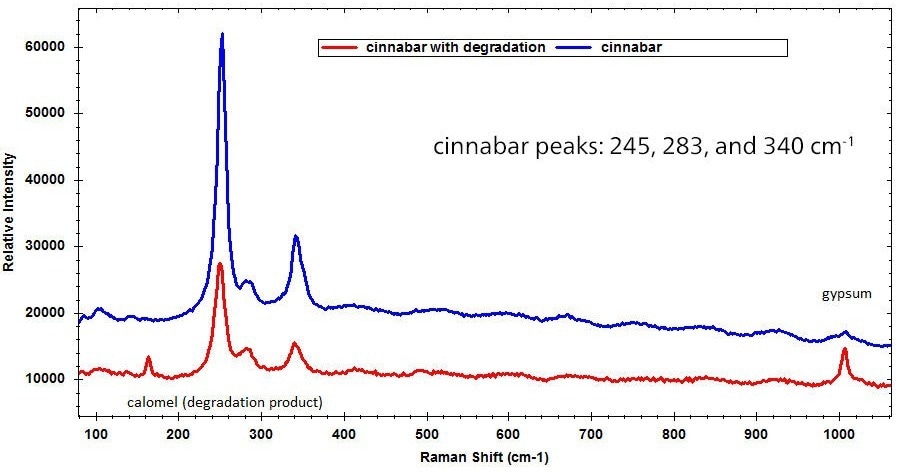
Figure 4. Raman spectra of cinnabar pigment in good condition, and showing signs of degradation. Image Credit: B&W Tek
In situ analysis is crucial for characterizing the gilded decorations' limited and often inaccessible regions, as many of these parts have decayed and are not widely present.3
Tin oxide was found in black areas near the gilding, indicating that tin foil was used as a substitute for gold in some gilding, possibly during later restorations.
Conclusions
Portable Raman spectroscopy is advantageous for analyzing archaeological sites because it can study in situ, minimizing the disturbance of culturally significant areas.
This approach offers flexibility using a fiber optic probe and tripod-mounted video microscope, which can be used with a lightweight instrument to gather representative measurements over large sample areas without extensive sampling.
The adjustable laser power enables the analysis of dark pigment samples with greater precision and control.
Raman spectroscopy also provides valuable information on the materials used in the construction and restoration of archaeological sites and the degree of degradation taking place, which can assist in preservation and restoration efforts.
Acknowledgments
The sharing of the research carried out by the groups highlighted here is gratefully appreciated. The company would like to thank Prof. Antonio Hernanz of Universidad Nacional de Educación a Distancia in Madrid, Prof. María José Ayora Cañada of the Universidad de Jaén, and Arturo Prudencio of Microbeam.
References and Further Reading
- “Spectroscopic characterisation of crusts interstratified with prehistoric paintings preserved in open-air rock art shelters”, A. Hernanz et al, J. Raman Spectrosc., 2014 45(11), 1236-1243. doi 10.1002/jrs.4535
- “In situ noninvasive Raman microspectroscopic investigation of polychrome plasterworks in the Alhambra”, A. Dominguez-Vidal, M.J. de la Torre-López, R. Rubio-Domene, M.J. AyoraCañada, Analyst, 2012, 137(24), 5763-9. doi: 10.1039/c2an36027f.
- “Gold in the Alhambra: study of materials, technologies, and decay processes on decorative gilded plasterwork”, M.J. de la Torre-López, A. Dominguez-Vidal, M.J. Campos-Suñol, R. Rubio-Domene, U. Schade and M.J. Ayora-Cañada, J. Raman Spectrosc., 2014, 45(11), 1052-1058. doi 10.1002/jrs.4454

This information has been sourced, reviewed and adapted from materials provided by B&W Tek.
For more information on this source, please visit B&W Tek.